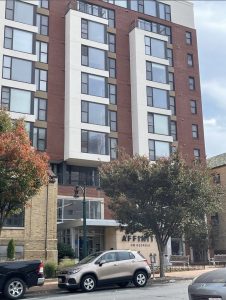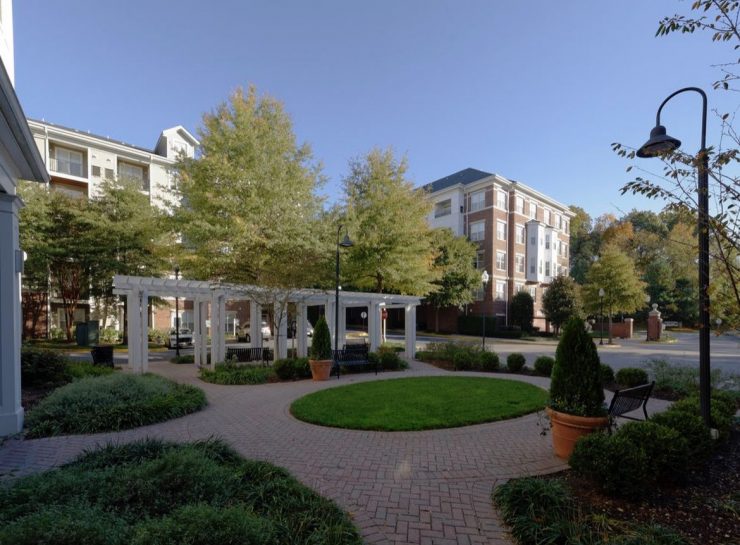Less than six months ago, Montgomery County’s efforts started getting national attention for its innovative ideas for affordable housing. The positive news spread after the Council approved a $100M fund and the County developed new strategies to improve the housing conditions.
The “Housing Production Fund” was established by the Housing Opportunities Commission (HOC) with Montgomery County to finance the construction of new, mixed-income housing throughout the county in March 2021.
Despite being commended for its progressive strategies, Montgomery County has faced criticism for its existing housing plans, simultaneously endorsing affordable housing initiatives and promoting luxury apartment markets. This duality has sparked debates among community members who question the county’s commitment to addressing the diverse housing needs of its residents.
Stacy Eastway, 48, concerned over rising rent, contacted the county to rent a place under one of the county’s initiatives in August 2023.
“I never receive a response. How are we supposed to access these programs and initiatives when the county officials never reply?” said Eastway.
Eastway, who works at Sibley Hospital, pointed out the difference between her income and rising rent prices every year.
“I will never be able to afford a house in Montgomery County. Rent going up every year is just concerning,” said Eastway. “The apartments raise the rent by $600 every year. I don’t get a raise that much.”
Montgomery County, recognized as a trailblazer in affordable housing solutions, has implemented policies and programs that have set benchmarks nationwide. However, the experiences of certain individuals within the community suggest a more complex narrative.

In a meeting organized by the League of Women Voters of Montgomery County last Tuesday, Chris Gillis, director of policy and neighborhood development at Montgomery Housing Partnership, said, “No, we’re not doing as much as we should have in the affordable housing domain.”
The meeting targeted how much progress is being made around affordable and attainable housing. While the county is happy about the $100M fund, it is still unclear where the money will go.
The Wash contacted the Department of Housing and Community in Montgomery County about using the Housing Production Fund but didn’t receive a response.
Andrew Friedson, Montgomery County councilmember, acknowledged that buying a house in the county is out of reach for so many people in the meeting. The Council is continuously working towards the planning and implementation, he said.
“We are concentrating on mixed-income housing to reduce the rents and help the residents. Other plans include converting parking lots into public housing which seems to work really well in Bethesda, Grover and Forest Glen,” said Friedson.
Some argue that the praised initiatives may not be as universally effective as portrayed, with concerns arising about the accessibility and suitability of the existing housing options provided.
Anne Williams, a resident of Montgomery County going through a specific disability, expressed how difficult it is to afford a shelter with medical bills to be paid.
“To me, it’s a moral failing if you cannot afford the housing you need. But the core of my problem is that the difference between health and sickness is luck, pure and brutal,” said Williams.
Notably, the spotlight on high-income areas like Bethesda and Chevy Chase adds nuance to the debate.
While these locales are expected to be affluent, there is an acknowledgment that the progress toward more inclusive housing solutions may require time.
Community members emphasize the importance of ensuring that the benefits of affordable housing programs extend beyond specific neighborhoods and income brackets.
Amy Johnson, a resident of Gaithersburg in Montgomery County, talked about how she toured the apartment buildings under the affordable housing initiatives and found the units under ‘not livable’ conditions.

“I toured seven places, and none of the places matched with the pictures shared on their official websites. The places were filled with bugs, roaches and poop. It’s disgusting. There was no water. The doors don’t lock,” said Johnson, which highlights the issue with existing housing plans.
Lisa Govoni, the Housing Policy Coordinator at MoCo Planning Dept. of the Maryland-National Capital Park & Planning Commission, said that the county is missing middle-income housing and needs to work on existing housing strategies.
Moreover, the Montgomery County Community Action Agency’s 2023 Self-Sufficiency Standard (SSS) report shows significant increases in the cost of living, particularly in housing and childcare costs.
The Self-Sufficiency Standard specifies how much income families of various sizes and compositions must earn to live in selected geographic locations without receiving governmental or private assistance.
As the discourse unfolds, Montgomery County finds itself at the intersection of its celebrated achievements and the perspectives of those who contend that the reality on the ground does not align with the county’s acclaim.
The ongoing debate underscores the complexities inherent in addressing affordable housing issues and highlights the need for a comprehensive, inclusive approach that caters to the community’s diverse needs.















Add comment